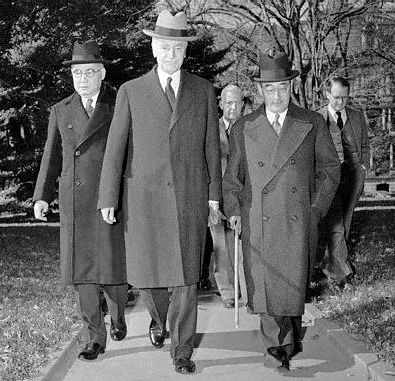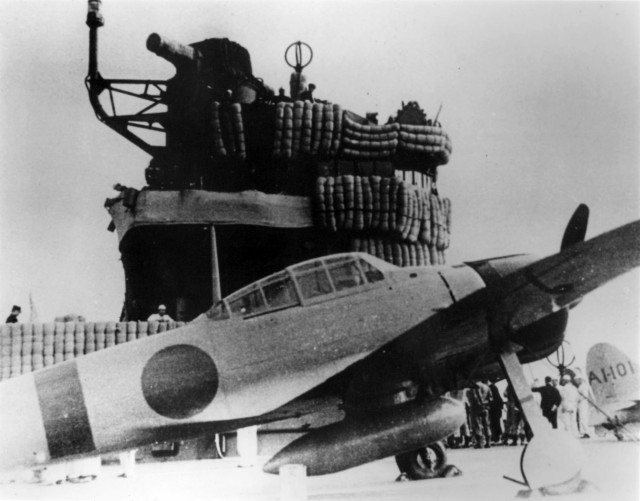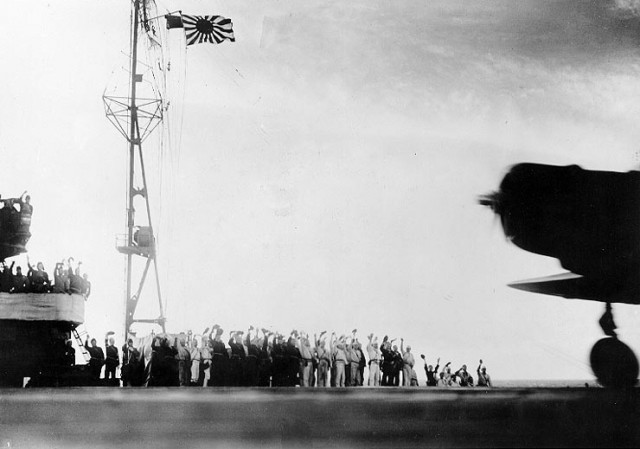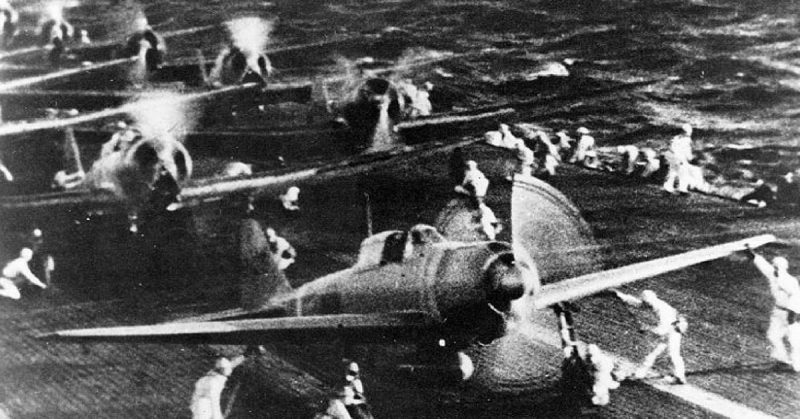On 7 December 1941, Japanese forces launched a surprise attack on the United States naval base at Pearl Harbor in Hawaii. The attack shocked America and propelled the nation into the Second World War.
We look back and ask – why did Japan launch this attack, and why was this particular attack, as President Franklin D. Roosevelt said, “a date which will live in infamy”?
The Pearl Harbor Attack
The attack began at 7:48 am local time. The majority of the US Pacific Fleet was at anchor in Pearl Harbor, with the notable exception of three aircraft carriers. Appearing from aircraft carriers out of sight over the horizon, 360 Japanese planes bombarded the harbor with bombs and torpedoes. They came in two waves, the first equipped to deal with the heavier and more important American ships. Submarines also participated in the attack.
The assault caught the defenders completely by surprise. Men were roused from their beds by the sound of alarms and explosions, rushing to take up air defense positions. The attack lasted only ninety minutes. The third wave of aircraft was canceled, in part due to the determined resistance put up against the second wave.
2,403 Americans died in the attack, and 1,178 were wounded. Two battleships and two other ships were lost. 15 were damaged, several of them severely. 188 aircraft were destroyed and 159 damaged.
The Japanese lost five midget submarines, 29 aircraft, 64 men killed and one captured.
Why A Day of Infamy?
The United States and Japan had been preparing for the possibility of war since the 1920s. Since the outbreak of open hostilities between Japan and China in 1937, those tensions had escalated at an increasingly rapid pace. Japanese massacres of Chinese civilians turned American opinion strongly against the Japanese, leading the US to provide supplies to the Chinese.
When Japan invaded French Indo-China in 1940, America cut off much of the critical trade between them, further raising the stakes. With Japan increasingly expansionary and America increasingly restrictive in its trade, a war began to look inevitable.
So why was it so shocking when it arrived?
Japan and the US had been in negotiations throughout 1941, trying to improve relations and so maintain peace. The collapse of the conciliatory Konoye government in Japan made peace less likely, but talks were still in progress.

Though the Second World War was becoming global, many in America wanted to avoid involvement. Japan was allied with Germany and Italy, so war with her would draw them into the bloody mess engulfing Europe.
The Japanese deliberately waited until the last moment to declare war, and it is likely that the surprise attack would have shocked and outraged Americans regardless. But the infamy of the attack was made worse by an error of timing.
A declaration of war was meant to be handed to the American government just before the attack began, but it took longer than expected to transmit and transcribe. As a result, the two countries were not formally at war when the attack began.
Why Attack Pearl Harbor?

The strategic advantage for Japan of taking out the American fleet was clear. By not trading, America was cutting off Japanese access to important industrial resources, in particular, oil. The Japanese response was to seize land that would give them access to these resources or allow them to control trade. This might not force outsiders to trade with Japan, but it could prevent them supplying China.
Many of these territories were colonies controlled by European powers. With the Europeans busy with their part of the war, America was the only power likely to challenge Japan’s plans, making the American fleet a menace. The Two-Ocean Navy Act of July 1940 created a time pressure, as it set America on course to increase its navy by 70%. If Japan was going to act, it needed to do so now, before its fleets were completely outnumbered.
Tactically, the attack on Pearl Harbor came from balancing costs and benefits. Being in the harbor, the ships would be easy to find, unable to maneuver, and unprepared to defend themselves. They would be sitting ducks. On the other hand, the shallow water would make them easier to salvage and mean more survivors among the crews.
Aside from the physical impact, the Japanese believed that a single shocking attack would fracture American morale, making it harder for the US to commit to and maintain a war effort. In essence, they hoped to shock America into a swift surrender.
Why the Surprise Attack?

Ironically, the decisive influence in Japanese strategy was an American, Admiral Alfred Thayer Mahan (1840-1914). Mahan’s writings on warfare were a huge influence on the Japanese navy, leading them to seek a single decisive action, destroying as many ships as possible to gain a swift victory.
Surprise was vital to this. The Japanese needed the Americans to be unprepared so that they could catch as much of the Pacific fleet in dock as possible. The surprise would minimize preparedness at Pearl Harbor, reducing resistance and so Japanese casualties.
The shock value of the attack would also be accentuated by surprise. But ultimately this shock value, exaggerated by the delayed declaration of war, led to outrage and hostility from America rather than surrender.
Like Hitler in Europe, the Japanese believed that they could quickly win with a small number of swift, decisive strikes, overpowering the superior manpower and industrial might of their enemies. But as the following years showed, the Second World War would be won by a slow grind and a mass industrial process backed by the will to win.
The date of infamy only added to that will.
